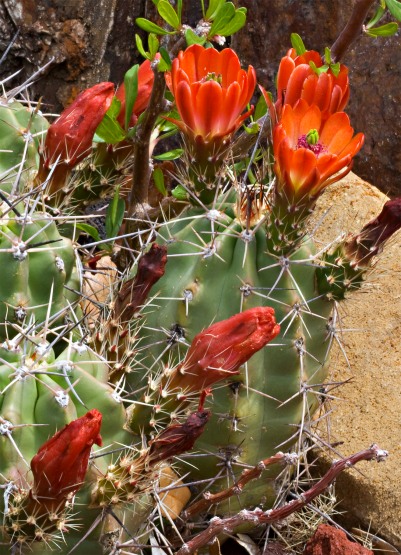
Cacti, plants that belong to the plant family Cactaceae, originated in the new world and have been a source of fascination since they were noticed (at least by Europeans) in the late fifteenth century. Upon seeing them for the first time, some explorers found them exotic and beautiful right away. Others hated them instantly thinking they were horrid monstrosities. The situation has not changed much today – you love ‘em or you hate ‘em. For those who love them, the Trans-Pecos is a great place to be.
From the questions park visitors ask, it is clear that many don’t really know what a cactus is – for them, anything with thorns is a cactus. But cacti are much more complex than that. So what, exactly is a cactus.
This post is the first in a planned series on the cacti of the Trans-Pecos and the Big Bend Ranch State Park.
Succulence
Cacti are succulents, and this fact goes a long way to describing their appearance. Succulence is actually an adjective of sort. Succulence has arisen in around 25 different families of plants, independently of one another. Simply put, a succulent is any plant that has specific adaptations for storing water, for whatever reason, inside its tissues. The result is that whatever parts of the plant are used for storage, become unusually fat or swollen.
Succulents have thick, waxy cuticles that protect the epidermis from the surrounding environment. Their interiors are filled with specialized water-storing tissues comprised of musilage and/or sugar polymers, called polysaccharides, that absorb water and immobilize it. Cacti do not have leaves, so photosynthesis takes place in the stems of the plant.

Interior of an Aloe Succulent
Succulents employ a specialized form of photosynthesis known as Crassulacean Acid Metabolism, or CAM. In most forms of photosynthesis, the plant generates sugars while the sun is shining. In CAM photosynthesis, the plant uses sunlight to create crassulacean acid which it stores in its tissues. Then in the evening, when it is cooler, the plant opens its stomata and uses carbon dioxide to convert the crassulacean acid into carbohydrates that the plant can use as food. Doing the transpiration this way greatly reduces the amount of water that can escape through an open stomata. In a further adaptation for retaining water, the number, or density of stomata is greatly reduced, so CAM photosynthesis is slower than the C3 and C4 types of photosynthesis most plants use.
Other Common Traits
Cacti share some adaptations with other xeric plants. They use a shallow, but wide-spread root system that can gather large amounts of water quickly during the brief times it is available. The ovaries of all cacti are inferior, meaning that they form below the flower. And all cacti are perennial – some have extraordinary long life spans.

Cactus ovaries are beneath the flower
Other characteristics that are shared with many other plants include the fact that the stigma of all cactus flowers are divided. And all cacti bear fruit in the form of a berry. The berry has only one compartment, and is usually filled with many small seeds.

Cactus flowers have divided stigma

Cactus fruits are single-compartment berries
The cactaceae family contains two subfamilies: the Opuntiodeae and the Cactoideae. The next post will discuss the Opuntiodea.




CAM photosynthesis–and all the other cactus adaptations! Nature is so clever. I will never look at a cactus the same way now. The breezy writing style makes for an article that is information-loaded, easy to understand, and entertaining. Photographs are beautiful. Quite a talent.
👱🏻♀️🐶🍷🤓✌🏽🙏🏼👍🏽😴 all good now!
Earth 🌍 rocks!
Sent from my iPhone
>